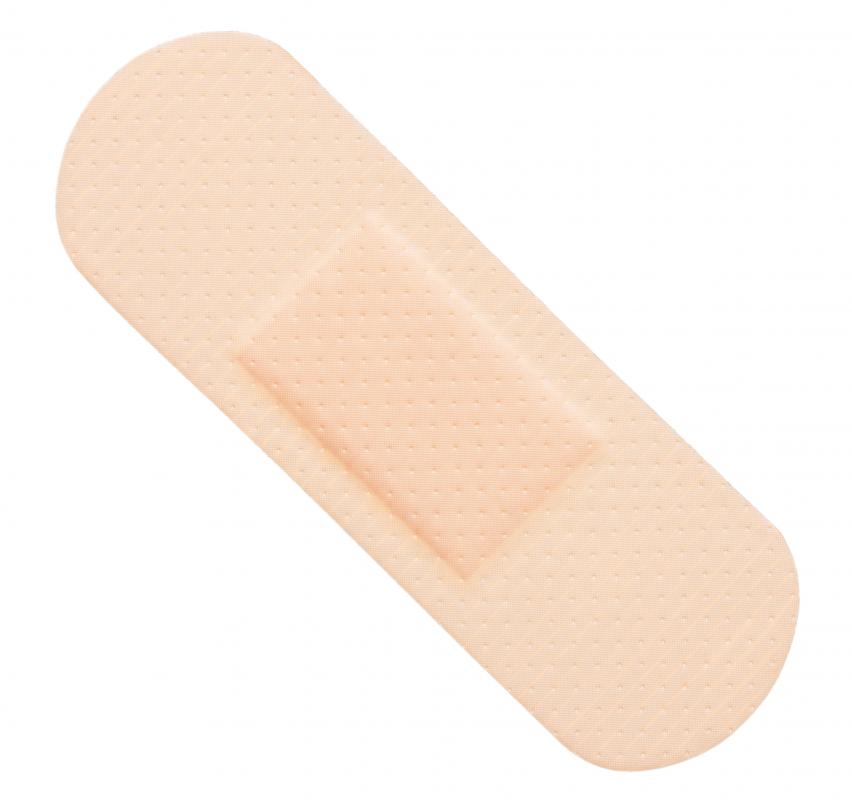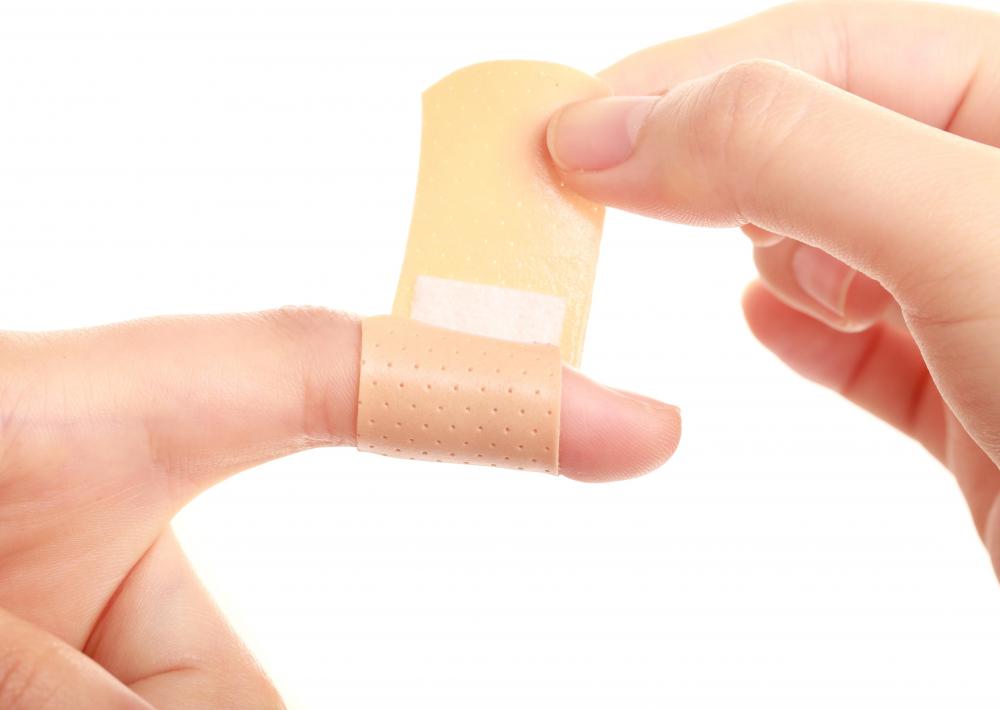At WiseGEEK, we're committed to delivering accurate, trustworthy information. Our expert-authored content is rigorously fact-checked and sourced from credible authorities. Discover how we uphold the highest standards in providing you with reliable knowledge.
How Do I Choose the Best Bandages?
The bandage you choose for a wound depends on your type of injury. Small adhesive bandages are ideal for small nicks and cuts on the fingers or other parts of the body. Injuries on joints need bandages that will flex and bend without peeling off. A standard bandage won't work well on a wound that is bleeding heavily.
The best bandages for a small wound, such as a paper cut on the finger or a scratch on the leg, are the standard bandages that are either made of fabric or plastic and feature a small pad in the center. These bandages may or may not be waterproof. You need to worry about a waterproof bandage only if you plan on getting it wet, such as by going swimming or washing dishes. Some bandages are decorated with cartoon characters or come in fun colors, making them an ideal choice for minor wounds on children.

A scrape on the knee or a cut on the knuckles requires a bandage designed for joints. This type of bandage has more adhesive around the pad so that the bandage doesn't peel off when you bend the joint. Usually, a joint bandage is waterproof as well.
If you have a large scrape or burn that isn't bleeding very much, you will need a flat, wide bandage to cover it. A large bandage is ideal for an area of the body that doesn't move much, such as the top of the thigh rather than top of the knee. Flat, large bandages can be waterproof and made of fabric or plastic.

A bandage designed for blisters or other open sores may be your best option if you have a popped blister or other wound that is leaking fluid but not blood. The pad of a bandage designed for blisters is more absorbent than other pads, so it draws the fluid away from your skin. It protects the blister or wound from infection and speeds the healing time.

A wide, open wound that is bleeding profusely requires a bandage that will pull the two sides of the cut together to help speed the healing process. A butterfly bandage will bring the two sides of a cut together. You should use it underneath of a gauze pad or with a large bandage for best results. If your wound is very severe, it may be best to see a doctor for treatment.
AS FEATURED ON:
AS FEATURED ON:















Discuss this Article
Post your comments